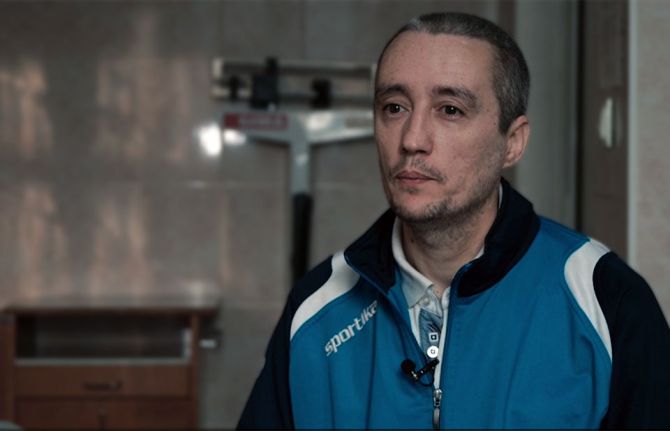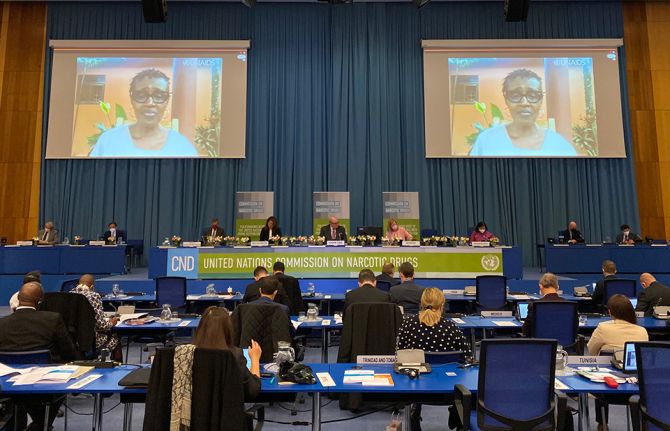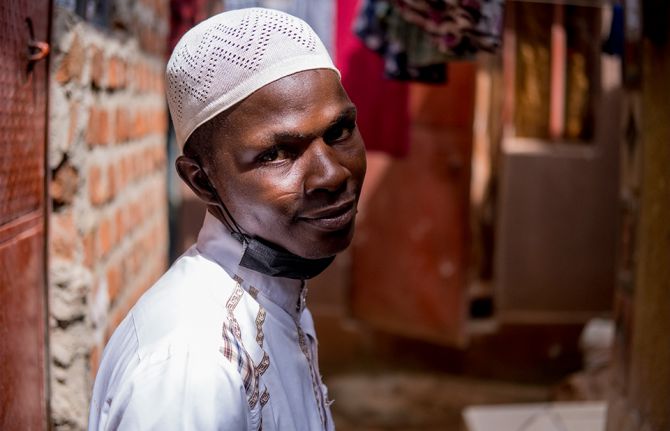
Feature Story
Injecting drug use and HIV: Interview with UNAIDS Team Leader, Prevention, Care and Support team
12 March 2009
12 March 2009 12 March 2009The Commission on Narcotic Drugs (CND) is meeting at the United Nations Office in Vienna for its 52 session, from 11-20 March 2009. At this session, governments will assess the progress achieved in meeting the goals defined in the 1998 UN General Assembly Special Session on Illicit Drugs.
In an interview, Mr Michael Bartos, UNAIDS Team Leader, Prevention, Care and Support team, shares his thoughts on the Commission’s progress in addressing the link between injecting drugs and HIV.
The 52nd session of the Commission on Narcotic Drugs is taking place 11 years after the landmark UN General Assembly Special Session on Illicit Drugs in 1998. Where are we today in addressing the links between HIV and drug use?
This year’s session of the Commission on Narcotic Drugs (CND) in Vienna marks ten years plus a year of reflection since the 1998 UN General Assembly Special Session on Illicit Drugs. The Commission and its high-level ministerial segment will be looking at progress made since 1998, the current situation and the next steps in the response to the global drug problem.
HIV is only one of the many aspects of the global drug problem. At the CND it is considered in the context of “demand reduction” where members will consider how to deal with both direct harms to drug users and the associated harms which include HIV.
"We are now very well aware of the central link between HIV and injecting drug use, and aware that the nexus has to be broken if we’re really to have any hope of getting HIV as an epidemic under control in many parts of the world."
Michael Bartos, UNAIDS Team Leader, Prevention, Care and Support team
Since 1998 we have become much more conscious of the intertwined nature of the epidemics of drug use and HIV. In 1998 we were already able to see the extent to which HIV had been transmitted among injecting drug users, and we were aware of the fact that injecting drug use was a very efficient way for HIV to spread across the countries. But at that stage the extent of the potential problem was not yet fully in view. For example the Russian HIV epidemic —which is largely driven by injecting drug use— had very few HIV cases before the beginning of the 90s. We now talk about Russia having one million HIV cases. The reality is that the decade of the 90s saw the explosive growth of HIV amongst injecting drug users in Russia and in a number of other countries.
So we are now very well aware of the central link between HIV and injecting drug use and aware that the nexus has to be broken if we’re really to have any hope of getting HIV as an epidemic under control in many parts of the world.
What are some of the key challenges in responding to the issues of HIV and drug use?
There are a series of challenges to properly addressing HIV amongst injecting drug users. The first is that in most countries injecting and other drug use are illegal. Therefore these behaviours and the ways they are controlled fall under the authority of the police.
This is an issue in relation to HIV as the most effective prevention strategies are those which include the people who are most affected. It has been very difficult for people who inject drugs to argue that they can, should, and indeed must, be part of the solution to AIDS and not viewed simply as part of the problem and thrown into prison or treatment camps.
Injecting drug users can find themselves marginalized in most social responses, including the responses to HIV. A considerable challenge is how to assist people who use drugs access HIV services and how to assist organizations who help provide services to people who use drugs, including HIV services.
Can law enforcement agencies and AIDS organizations work together?
Some real achievements have been made when law enforcement authorities and people who use drugs have found a common cause working together to deal with the harms associated with injecting drug use. That’s one of the things that we need to focus on: the ways in which positive policing can support AIDS response.
What will UNAIDS highlight at the Commission on Narcotic Drugs?
At the Commission on Narcotic Drugs UNAIDS wants to draw attention to the scale of the problem. There is virtually no country in the world where there aren’t at least some people who inject drugs. Recent estimates, constructed under the auspices of the reference group to the United Nations system on injecting drug use, show around 16 million drug users across the world, an estimated 3 million are living with HIV. That’s quite a considerable part of the global HIV epidemic. In fact 30% of the global HIV epidemic outside sub-Saharan Africa is among injecting drug users.
"Many IDUs are excluded from HIV treatment programmes because those running the programmes assume that people who use drugs would be unable to take their HIV treatment regularly."
Michael Bartos, UNAIDS Team Leader, Prevention, Care and Support team
But even more important than drawing attention to the scale of the problem is moving the focus to the scale of the response needed. A number of countries around the world are moving to full scale implementation of harm reduction services to deal with HIV amongst people who inject drugs.
These services include access to opioid substitution therapy such as methadone and buprenorphine services as a way drug users can be assisted to deal with their addiction. Other services include access to drug treatment and sexual health services, condoms and access to antiretroviral therapy for HIV for those drug users who need it.
Many IDUs are excluded from HIV treatment programmes because those running the programmes assume that people who use drugs would be unable to take their HIV treatment regularly.
Needle and syringe exchange services have proven to be effective in ensuring that drug injectors do not share contaminated equipment—which is a very efficient way of passing on the virus.
A number of countries are scaling up access to this full range of services. Impressive work has been done by countries such as Indonesia. Malaysia has made high level commitments to address these questions among its population. China has been very seriously addressing the way in which can fully scale up its package of services in relation to HIV and injecting drug use. The same has applied to many parts of India, and Bangladesh which have also made some impressive commitments. So particularly in east and south-east Asia there have been some strong developments. Also In eastern Europe and central Asia there have been signs that the most successful national responses to HIV amongst IDUs are looking to provide these services at full scale.
Do you anticipate the Commission on Narcotic Drugs at this session to make some headway on harm reduction? What needs to be done, politically speaking, to get harm reduction on Member States’ agenda?
"It has been very difficult for countries around the world to get the right balance—or to come to consensus on how to balance— the twin desires of getting people to not use drugs and also reducing the harms associated with drug use."
Michael Bartos, UNAIDS Team Leader, Prevention, Care and Support team
The Declaration of Commitment on HIV/AIDS adopted by the UN General Assembly Special Session on HIV/AIDS in 2001 makes a clear commitment to the range of harm reduction approaches. This was then repeated by the General Assembly in its 2006 Political Declaration on AIDS. However, the phrase “harm reduction” in the context of “drug control” which is reflected in the Commission on Narcotic Drugs, remains a contested term.
Apart from a question of terminology, harm reduction is also contested on a substantive level. It has been very difficult for countries around the world to get the right balance—or to come to consensus on how to balance— the twin desires of getting people to not use drugs and also reducing the harms associated with drug use.
I think that there is a strong sense across the world that a public health approach, a harm reduction approach, is the more prominent perspective in the global discourse. However it still hasn’t found its expression in the policies of a number of countries.
We have a situation where in some countries the national drugs authorities who consider questions of drug use and HIV may not even know what their counterparts in the national health and AIDS authorities are doing in relation to their response to HIV amongst IDUs.
One of the priorities for UNAIDS, alongside United Nations Office on Drugs and Crime (UNODC) which is our lead cosponsor on these issues, is to actually bring together drug authorities, AIDS authorities and prison authorities to talk jointly about the strategies which they are adopting to identify jointly what the barriers are to effective strategies for dealing with these intertwined problems in their settings such as prisons, or in relation to street policing, or in relation to HIV services and health services.
Back to topInjecting drug use and HIV: Interview with UNAIDS Team Leader, Prevention, Care
Cosponsors:
Press centre:
High Commissioner calls for focus on human rights and harm reduction in international drug policy (10 March 2009)
Feature stories:
OPINION: Silence on Harm reduction not an option (11 March 2009)
51st session of the Commission on Narcotic Drugs (11 March 2008)
Reducing drug related harm (14 May 2007)
Injecting drug use: focused HIV prevention works (11 May 2007)
Harm reduction to be scaled up in Ukraine (11 April 2007)
Increased HIV services for drug users needed (14 November 2006)
External links:
The Commission on Narcotic Drugs (CND)
Statements:
Publications:
Best Practice Publication: High Coverage Sites—HIV Prevention among Injecting Drug Users IDU in Transitional and Developing Countries ( En | Fr | Es | Ru )



